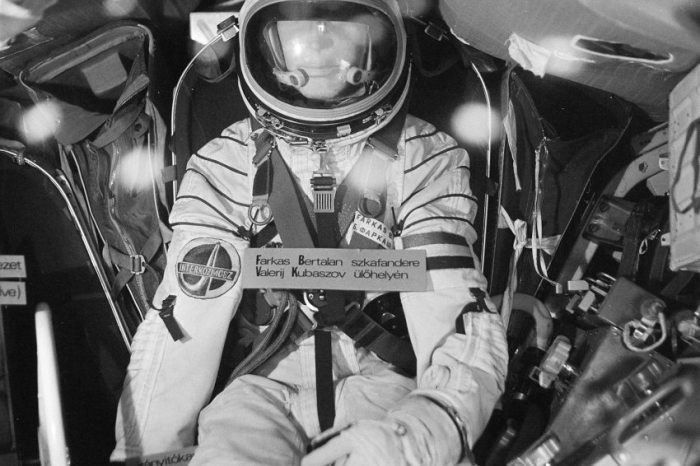Hungarian astronaut candidates are getting ready! – We are exploring space with the world's best in the HUNOR space program
There has always been an insatiable desire in man to discover the secrets of the sky. This desire drove Copernicus, Galileo, Kepler, and Newton. Mankind crossed a very important frontier in 1957, when the direct exploration of space began with the launch of the Sputnik satellite on 4 October, a process that has continued ever since. Hungary has not shied away from the exploration of space and is now opening a new chapter with the HUNOR space program: the project will allow Hungarian society to get to know the exciting world of space exploration, which can also inspire young people in Hungary.

What is HUNOR exactly?
HUNOR is an acronym for HUNgarian to ORbit, reflecting the complexity of the program and the versatility of Hungarian space activities. The HUNOR space program is Hungary's own space exploration and space technology project, whose main objective is the development of space technology and scientific research in space. The program works closely with the UN, NASA, and NATO and brings together space activities in Hungary, enabling the launch of new experiments, space experiments, space probes, and satellites. (The name ‘Hunor’ is a popular boy's name in Hungary, meaning "Hun". In Hungarian mythology, brothers Hunor and Magor were the ancestors of the Hun and the Magyar ethnic groups. – translator’s note)
"This initiative will allow the country to participate in international space research and create innovation in the field of space flight. Space exploration not only leads to scientific and technological advances but also inspires and motivates the younger generation and shows that the frontiers of humanity can be continuously pushed," said Dr. Orsolya Ferencz, Ministerial Commissioner for Space.
HUNOR-objectives
The HUNOR program aims to put Hungarian space research ( exploring space weather, space plasma, etc.) and high-tech industry on an upward trajectory.
The aim is also to send a Hungarian research astronaut to the International Space Station, where the chosen one will spend almost a month on board the SpaceX Dragon spacecraft carrying out scientific experiments developed exclusively by Hungarians, including lunar rock tests and biomedical experiments.
Hungarians in space again
During the HUNOR space program, Hungary will have the opportunity to participate in an international space expedition in late 2024 or early 2025. Semmelweis University will be involved in training the astronauts and preparing the environment around them. Dr. Béla Merkely, Rector of Semmelweis University, will be responsible for the medical expertise in the HUNOR Program Steering Board.
"Monitoring astronauts' health and managing space-related research is an exciting and challenging task. The Semmelweis team is committed to ensuring that selected astronauts are trained to the highest standards so that they can successfully complete their future space missions. The selection of the astronauts is the result of a rigorous process, with the top 8 candidates selected from 240 applicants," said Dr. Béla Merkely, who also said that the candidates were tested in a selection process lasting almost a year to assess their mental capacity, physical endurance, personality stability, scientific work ethic and ability to work as a team. They undergo physical training to improve cardiovascular endurance, muscular strength, and neuromuscular coordination. Psychological training prepares them for the isolation and confinement they may experience during space missions.
Out of the four selected candidates, one will be allowed to fly into space.
Among the candidates are Gyula Cserényi, 33, an electrical engineer, Tibor Kapu, 31, an aerospace development engineer, Ádám Schlégl, a clinical orthopaedic surgeon and András Szakály, 40, an aeronautical design engineer.
Gyula Cserényi commented on his training to honvedelem.hu: "The performance diagnostic test of the medical team was physically demanding. A mask was placed on our faces to measure our breathing capacity, our upper bodies were covered with electrodes, and we had to run the kilometers on the treadmill - as long as we could. We also had psychological tests. Like we had a sea of questions, a total of 600 in psychology, for example, and we had 20 minutes for each test. Or there were a lot of maths problems, for which we were given 15 minutes in total."
At the Kecskemét site of the Hungarian Defence Forces Medical Centre, the selected participants also flew in Gripen aircraft, albeit in the back seat. The complex task sequence included high-intensity, high-overload turns, low- and medium-altitude aerobatic elements, high-altitude, supersonic flight, and other special manoeuvres to prepare the astronaut candidates for physiological conditions that differ from the norm.
Hungarian inventions help to explore space
"The Hungarians have already contributed to the exploration of the cosmos with a number of equipment, developments, and research, which have strengthened the Hungarian space industry and made it more competitive on the international market.
Such achievements include the launch into space of a number of small satellites, nanosatellites, which serve various research purposes and collect data on space phenomena.
We have also sent space probes into deep space, which have helped us understand how our solar system and the universe work. In Hungary, there are currently about 40 companies that base all or part of their activities on the space industry," said the Ministerial Commissioner responsible for space research.
Some other important Hungarian-developed space assets:
Puli Space: the Hungarian-developed instrument is a very small detector, less than 40 dekagrams in size, which is capable of searching for water ice in the upper layers of the lunar rock.
Pille: It joined the Soviet Union-led Interkosmos program in 1967. Bertalan Farkas went into space in 1980, where he carried out the Doza experiment. This was the first test of the Pille, one of the most successful products of Hungarian space activities, whose later versions were also used on NASA and ESA (European Space Agency) space vehicles. The Pille was a miracle in itself, as it was the first device to accurately measure the radiation dose to astronauts in space.
The VEGA probes, equipped with Hungarian instruments, examined the Haley comet.
In 1971, the Lunar Rover, the lunar surface exploration vehicle, was also designed by a Hungarian, Ferenc Pavlics.
The first Hungarian satellite, Masat-1, was launched in 2012.
Tritel RS is a radiation meter still in active service. Its touch screen allows astronauts to view measured doses in tabular and graphical form.








